Friends
of
Point
Lookout
is
a
501(c)3
volunteer
organization
established
in
1985.
It’s
focus
is
on
preserving
and
presenting
this
site
in
it’s
original
historical
context.
Through
living
histories
and
presentations
throughout
the
year,
it’s
maintains
the
grounds
of
one
of
the
only
remaining
earthen-
walled Civil War fortifications remaining in Maryland.
Point
Lookout
sponsors
historic
programs
and
demonstrations
throughout
the
year.
Contact
the
park
for a current schedule of historic programs. Popular annual festivities include:
April-- Park Days -- Join the Friends
of Point Lookout as they work to
maintain one of the only remaining
earthen-walled Civil War fortifications
remaining in Maryland.
June-- Blue and Gray Days --
Featuring artillery and infantry
demonstrations, dress parade and
evening programs in Civil War Fort #3.
September-- Artillery Weekend --
Living history volunteers show the
different styles of artillery that were
used during the Civil War.
October-- Invasion of Point Lookout -- Living history volunteers will shed light on Point Lookout’s
importance during the War of 1812. Artillery and infantry demonstrations will take place throughout
the event.
Those who would like to donate or join Friends of Point Lookout can
Contact Bob Crickenberger at: Crickenberger@comcast.net
3448 Brookside Dr
Chesapeake Beach, MD 20732
FEIN: 52-1841294
The Reconstruction and Preservation of Civil War
Point Lookout
(Parts of this article are excerpted from the forthcoming book, Point Lookout, Maryland: The Largest Civil War Prison
by Robert E. Crickenberger and published by Savas Beatie.
The
last
official
owner
of
the
400
acres
of
the
Point
Lookout
peninsula,
the
Point
Lookout
Grand
Hotel
Company,
would
sell
a
majority
of
what
it
owned
at
Point
Lookout,
to
the
State
of
Maryland
in
1965.
The
State
of
Maryland
purchased
the
property
with
the
intent
of
creating
a
new
recreational
state
park
in
southern
Maryland.
The
Hotel
Company
retained
seventeen
acres
for
its
hotel
and
resort
on
the
Chesapeake
Bay
side
of
the
Point.
The
purchase
did
not
include
the
acre
or
two
on
the
southern
tip of Point Lookout where the lighthouse and the Naval Station were located at the time of the deal.
The
new
stewards
of
this
property,
the
Maryland
Park
Service,
initiated
a
Master
Plan
in
1966
outlining
a
massive
project
to
create
an
environmentally
friendly
park
that
would
include
public
picnic
areas,
a
boat
launch,
playgrounds,
and
public
campground.
It
also
included
the
use
of
the
acres
of
beaches
afforded
by
both
the
Chesapeake
Bay
and
Potomac
River
shorelines;
much
like
the
first
recreation-
seeking
vacationers
had
for
generations.
It
was
noted
that
the
newly
acquired
ground
also
included
an
area
that
was
once
used
as
a
prison
for
Confederate
prisoners
of
war
captured
during
the
Civil
War.
The
plan
stated
that
there
would
be
no
need
to
preserve
or
interpret
the
site
as
there
was
a
National
Cemetery
maintained
by
the
federal
government
outside
the
immediate
borders
of
the
park.
Therefore,
no
plans
were
made
by
state
park
officials
to
conduct
any
preservation
projects.
There
was
no
mention
of
the
earthen
fort
located
on
the
Potomac
River
shoreline
as
the
state
did
not
receive
possession
of
this
designated acre and a half, until 1967.
While
on
a
visit
to
the
park
in
1977,
the
park
manager
gave
this
author
an
extensive
tour
of
the
two
major
historical
sites
that
included
the
heavily
overgrown
earthen
fort
and
the
prison
site.
As
the
Master
Plan
did
not
include
the
fort
site
in
its
description
of
the
park,
I
asked
the
manager
if
there
were
any
plans
by
the
park
service
at
that
time
to
restore
the
fort
or
to
identify
the
prison
site.
He
stated
that
in
accordance
with
the
Master
Plan,
there
were
still
no
plans
outlined
or
budget
provided,
to
interpret
or
preserve
any
of
the
historical
sites
within
the
park
property.
However,
he
did
explain
that
if
the
sites
were
to
be
preserved,
it
would
have
to
be
accomplished,
by
donated,
volunteer
labor.
Accepting
his
implied
invitation,
I
began
as
an
official
volunteer
for
the
Maryland
Park
Service during the early months of 1978.
Since
the
time
of
its
acquisition
by
the
State
of
Maryland,
efforts,
and
activities
by
various
volunteer
groups
such
as
the
Youth
Conservation
Corps,
area
Boy
Scout
troops,
Frederick
Community
College
Vocational
School,
the
Friends
of
Point
Lookout,
and
the
staff
of
Point
Lookout
State
Park,
have
performed
extensive
preservation
and
reconstruction
projects
on
these
two
significant
sites.
This
effort
has
also
included
the interpretation of what remains of the prison site, also known as Camp Hoffman, during the war.
Their
volunteer
efforts
had
their
desired
effect
on
the
Maryland
Park
Service
and
the
visiting
public.
A
renewed
Master
Plan
for
the
Land
Unit
at
Point
Lookout
was
published
by
the
park
service
in
1996.
In
the
narrative,
the
efforts
of
these
volunteer
groups
was
recognized
by
the
park
service
as
a
vital
resource
to
the
State
government
and
its
citizens.
As
soon
as
the
property
that
contained
the
historic
earthen
fort
had
become
part
of
the
park
two
years
after
the
State
acquired
the
property,
volunteer
groups
began
to
clear
the
fort
of
debris
and
overgrowth.
Their
efforts
have
successfully
returned
Redoubt
No.3
and
its
reconstructed
buildings
to
their
war-time
appearances
utilizing
the
plans
drawn
by
the
U.S
Army
Corps
of
Engineers
during
the
Civil
War.
Historic
living
history
programs
continue
to
be
performed
by
volunteers
bringing
attention
to
the
historic
site.
The
park
service
has
since
found
that
both
the
prison
site
and
the
fort
to
be
integral
parts
of
the
history
of
St.
Mary’s
County
and
the
State
of Maryland.
In
2022,
the
Friends
of
Point
Lookout
had
provided
funding
for
the
creation
and
installation
of
eight
new
interpretive
signs
throughout
the
park
involving
the
interpretation
of
Point
Lookout
during
the
Civil
War,
the
modern-day
hotel,
and
a
significant
moment
in
Black
History.
During
the
recent
years
of
2023
and
2024,
the
Friends
of
Point
Lookout,
in
partnership
with
the
Maryland
Park
Service,
with
a
grant
provided
by
the
Maryland
Historical
Trust,
have
begun
to
replace
the
constructed
southwest
corner
of
the
prison
stockade.
This
recent
work
includes
the
creation
and
installation
of
ten
new
additional
Civil
War
interpretive
signs
and
one
environmental
sign
within
the
park
boundaries.
The
Friends
of
Point
Lookout
continue
today
providing
living
history
programs
providing
support
and
maintenance
of
the
historic
sites
and
structures
of
Point
Lookout.
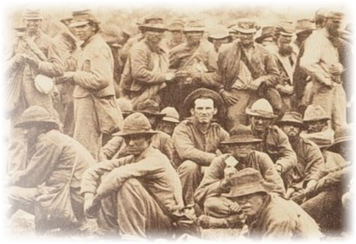
Friends of Point Lookout, Inc.
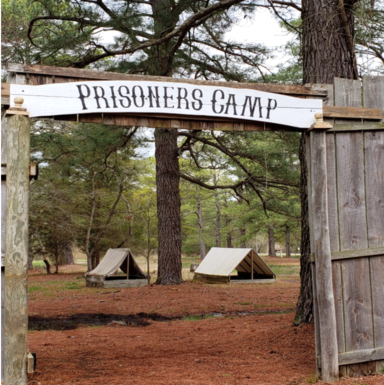
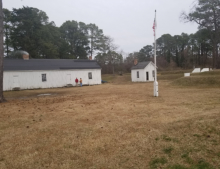
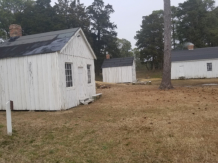
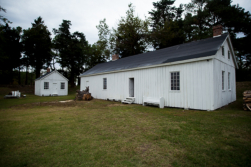
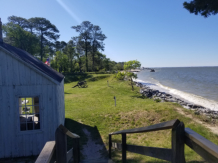
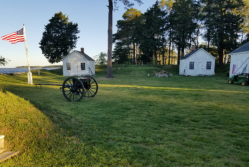
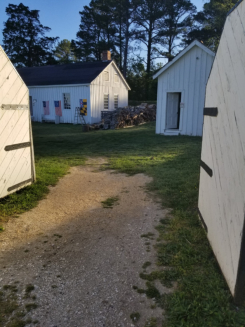
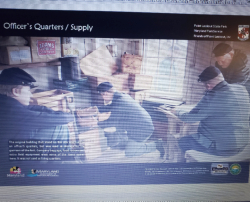
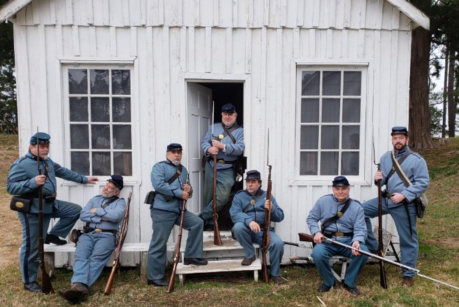
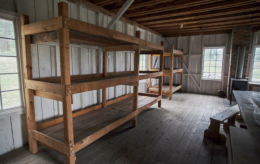
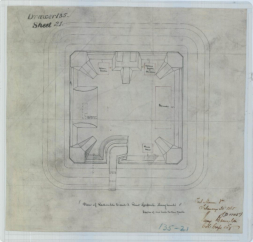
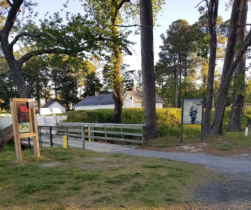
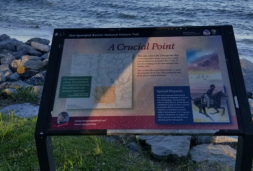
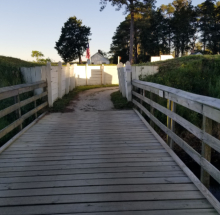
Click on photos to enlarge
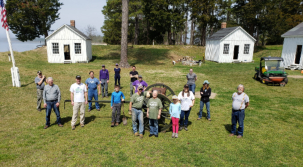
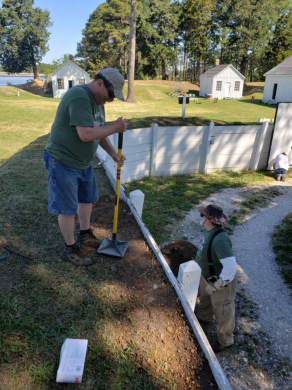
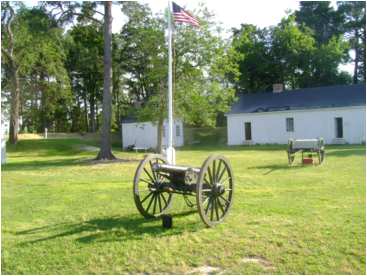
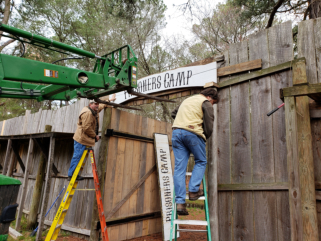
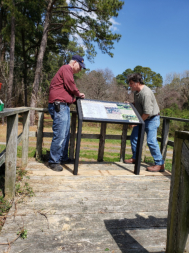
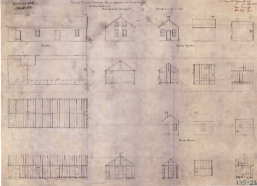
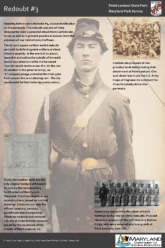
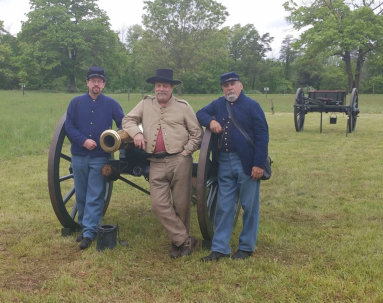
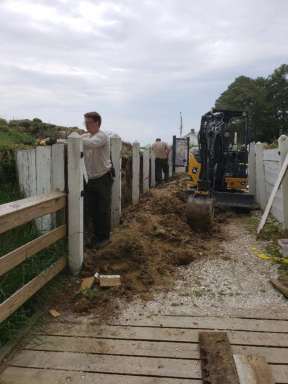
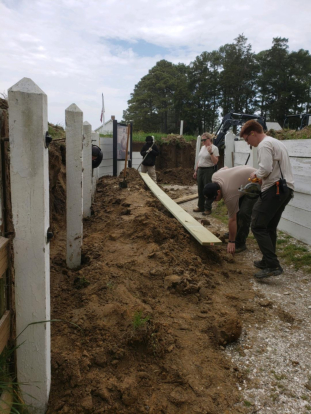
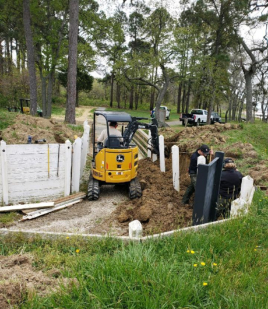
Copyright © 2024 Robert E Crickenberger
Point Lookout, Maryland:
The Largest Civil War Prison
By Robert E. Crickenberger
A Groundbreaking Book That Rewrites the Legacy
of the Union’s Most Infamous POW Camp
July 1863 – August 1865












